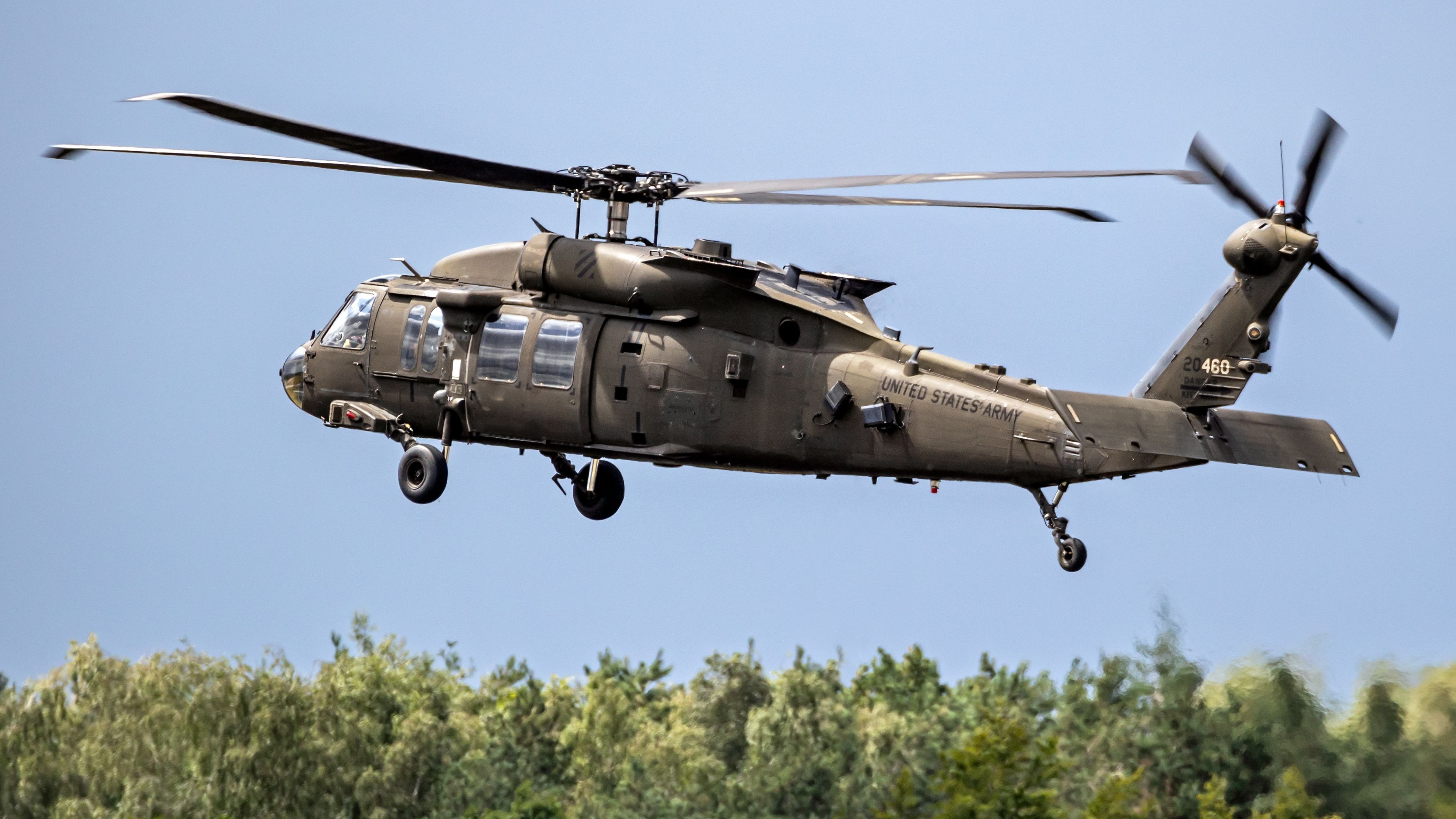Every Little Thing You Need to Understand About the UH 60 Helicopter
The UH-60 helicopter, a cornerstone of U.S. Military aviation since its launching in 1979, stands for an amazing mix of engineering and operational convenience. As military requirements advance, so too does the helicopter, with continuous innovations intended at enhancing its capacities and incorporating modern-day technologies.
History of the UH-60
Established in the late 1970s, the UH-60 Black Hawk helicopter emerged as a feedback to the united state Military's demand for a functional energy helicopter that can do a selection of goals under difficult problems. The catalyst for its design was the shortcomings determined in the earlier helicopters utilized throughout the Vietnam Battle, specifically in regards to survivability, rate, and maneuverability.
The Black Hawk was developed by Sikorsky Aircraft, integrating advanced innovations and materials to enhance its performance and durability. It was officially presented right into service in 1979, rapidly ending up being a vital asset for armed forces operations - uh 60. Its capability to deliver troops, medical evacuation, and logistical assistance in both battle and humanitarian missions made the Black Hawk a very useful part of the U.S. Army's aeronautics fleet
Throughout the years, the UH-60 has been continuously updated, adapting to the changing nature of war and the developing needs of modern-day armed forces operations. Its functional history includes engagement in significant conflicts, peacekeeping goals, and catastrophe relief initiatives, solidifying its online reputation as a trustworthy and efficient helicopter in various settings worldwide.

Style and Requirements
The style of the UH-60 Black Hawk helicopter consistently shows a dedication to operational performance and flexibility. Created by Sikorsky Aircraft, this medium-lift energy helicopter features a smooth, wind resistant fuselage that improves speed and maneuverability. Its tandem blades system, defined by two counter-rotating blades, lessens vibration and increases lift ability, allowing for much safer procedures in diverse atmospheres.
The UH-60 is powered by two T700-GE-701C turboshaft engines, supplying an optimum rate of roughly 180 knots and a series of around 400 maritime miles. Its durable airframe is created from innovative composite materials, guaranteeing toughness while keeping a reasonably low weight. The helicopter has a maximum gross weight of about 22,000 pounds, supporting a versatile payload configuration.

Functions and Goals
A functional platform, the UH-60 Black Hawk helicopter offers a wide range of duties and objectives within army operations. Created primarily for troop transportation, it can bring as much as 11 soldiers, making it an essential asset for quick deployment and logistical support.
Along with army transport, the UH-60 stands out in medical discharge (MEDEVAC) missions, furnished with innovative clinical tools to provide vital treatment throughout transportation. Its capacity to run in varied settings enhances its efficiency in her comment is here battle search and rescue (CSAR) procedures, where speedy removal of employees is vital.
The helicopter also plays a considerable function in reconnaissance and monitoring objectives, using onboard sensing units and devices to collect intelligence. Its convenience expands to logistical support, qualified of transporting products and tools to ahead operating bases.
In combat operations, the UH-60 can be furnished with different weapon systems, enabling it to offer close air assistance. Its multi-role ability makes the Black Hawk a vital device for contemporary military pressures, adjusting effortlessly to the developing demands of battleground situations and guaranteeing goal success across a variety of operational contexts.
Efficiency and Capabilities
Known go for its robust efficiency, the UH-60 Black Hawk helicopter flaunts outstanding capabilities that boost its operational effectiveness throughout various goals. uh 60. This multi-role airplane is equipped with effective twin-engine Turbomeca Arriel 1D1 engines, supplying outstanding speed and ability to move, with a maximum cruise ship speed of about 150 knots and an operational series of around 400 maritime miles
The Black Hawk's sophisticated avionics and fly-by-wire control systems significantly enhance flight security and handling, allowing it to run in diverse settings, including damaging climate here condition. Its adaptability is further exemplified by its ability to bring approximately 11 fully outfitted troops or a payload of about 8,000 pounds, making it suitable for troop transportation, clinical discharge, and logistical support objectives.
Furthermore, the UH-60 is made for survivability, featuring strengthened airframes, ballistic defense for crew and travelers, and progressed countermeasure systems to escape risks. The helicopter's agility and rate, incorporated with its capacity for fast deployment, make it a crucial property in modern-day military procedures, ensuring that it remains a crucial component of tactical air assistance and combat zone movement.
Future Advancement

One significant emphasis is the combination of sophisticated avionics systems, which will improve situational awareness via enhanced navigation and communication abilities. This includes the prospective use man-made intelligence to aid pilots in decision-making and mission preparation.
Additionally, future variants may include sophisticated materials and style attributes to reinforce the helicopter's resilience and reduce its radar signature, boosting survivability in objected to settings.
The introduction of hybrid-electric propulsion systems is additionally imminent, intending to boost gas effectiveness and decrease logistical concerns. Such innovations could prolong functional variety and lower the helicopter's environmental footprint.

Verdict
The UH-60 helicopter represents a considerable advancement in armed forces aeronautics considering that its intro in 1979. The UH-60's withstanding visibility underscores its crucial role in modern-day armed forces procedures and highlights the continuous advancement of military aviation innovation.
The UH-60 helicopter, a cornerstone of United state Army air travel given that its debut in 1979, represents a remarkable blend of design and operational convenience. As military requirements advance, so too does the helicopter, with continuous innovations intended at enhancing its capabilities and integrating contemporary innovations.The layout of the UH-60 Black Hawk helicopter consistently reflects a commitment to operational effectiveness and convenience. Created by Sikorsky Airplane, this medium-lift energy helicopter includes a streamlined, aerodynamic fuselage that enhances rate and ability to move.The UH-60 helicopter represents a substantial advancement in military aviation considering that its intro in 1979.
Comments on “Why the UH 60 Helicopter is Critical for Modern Military Operations”